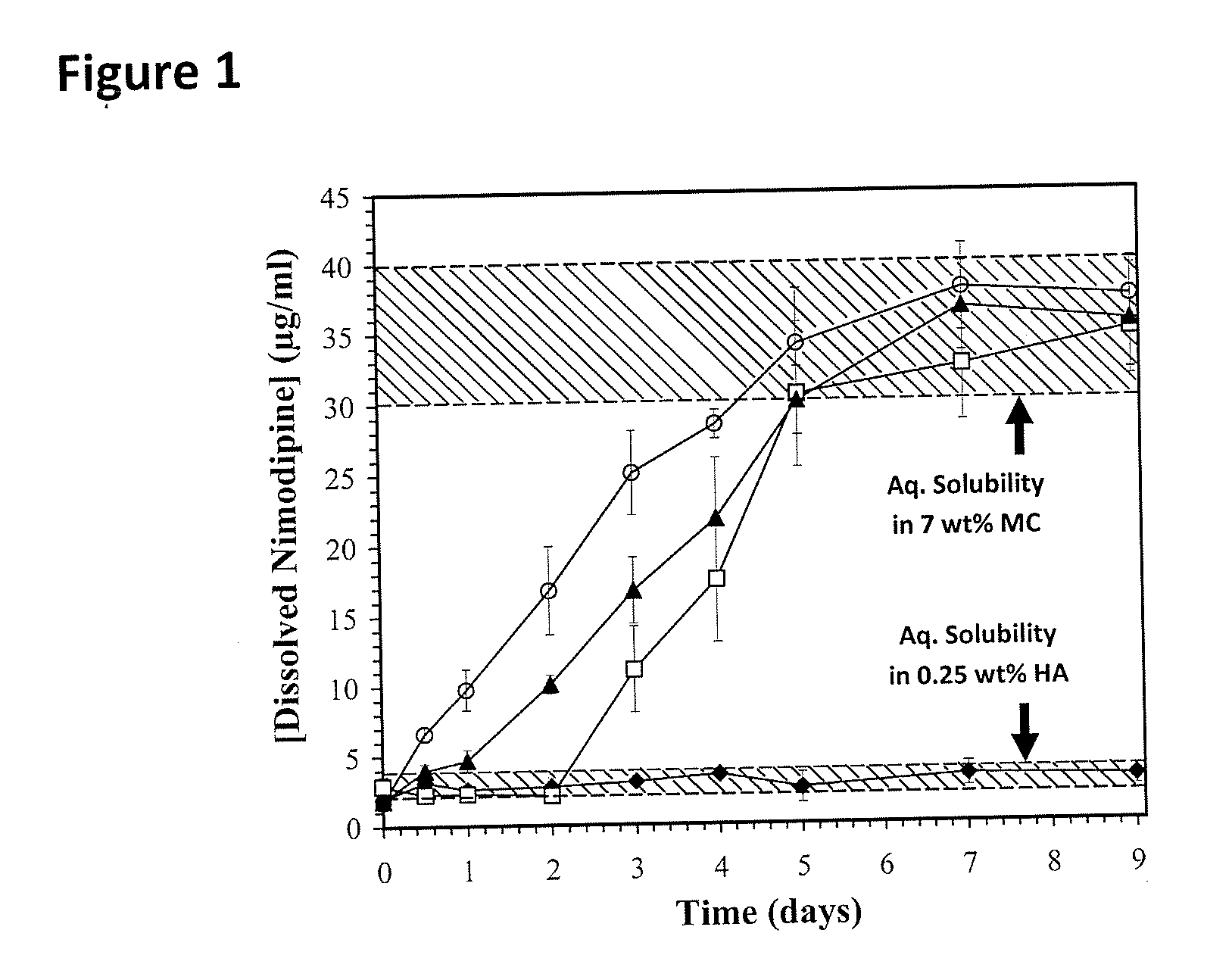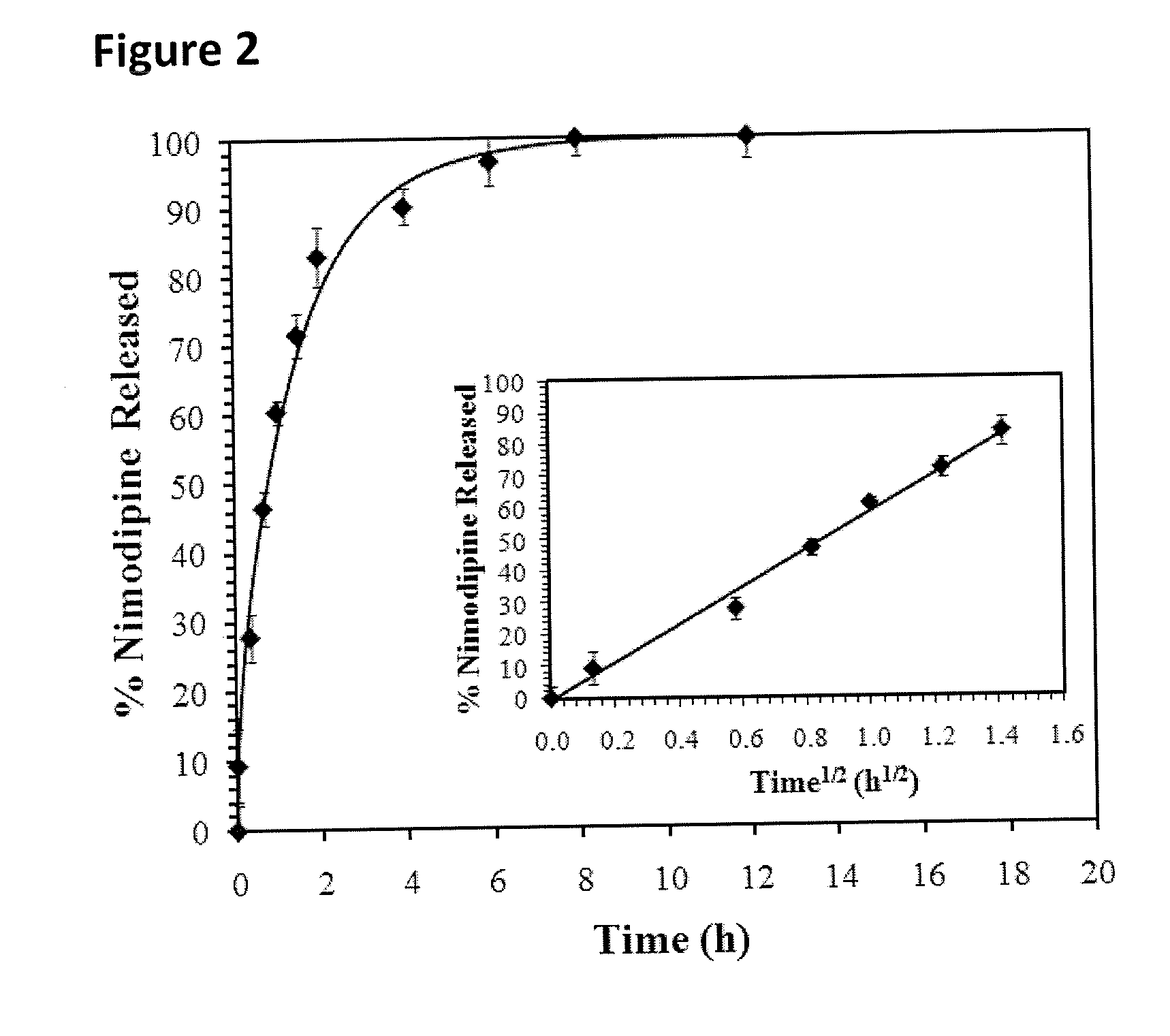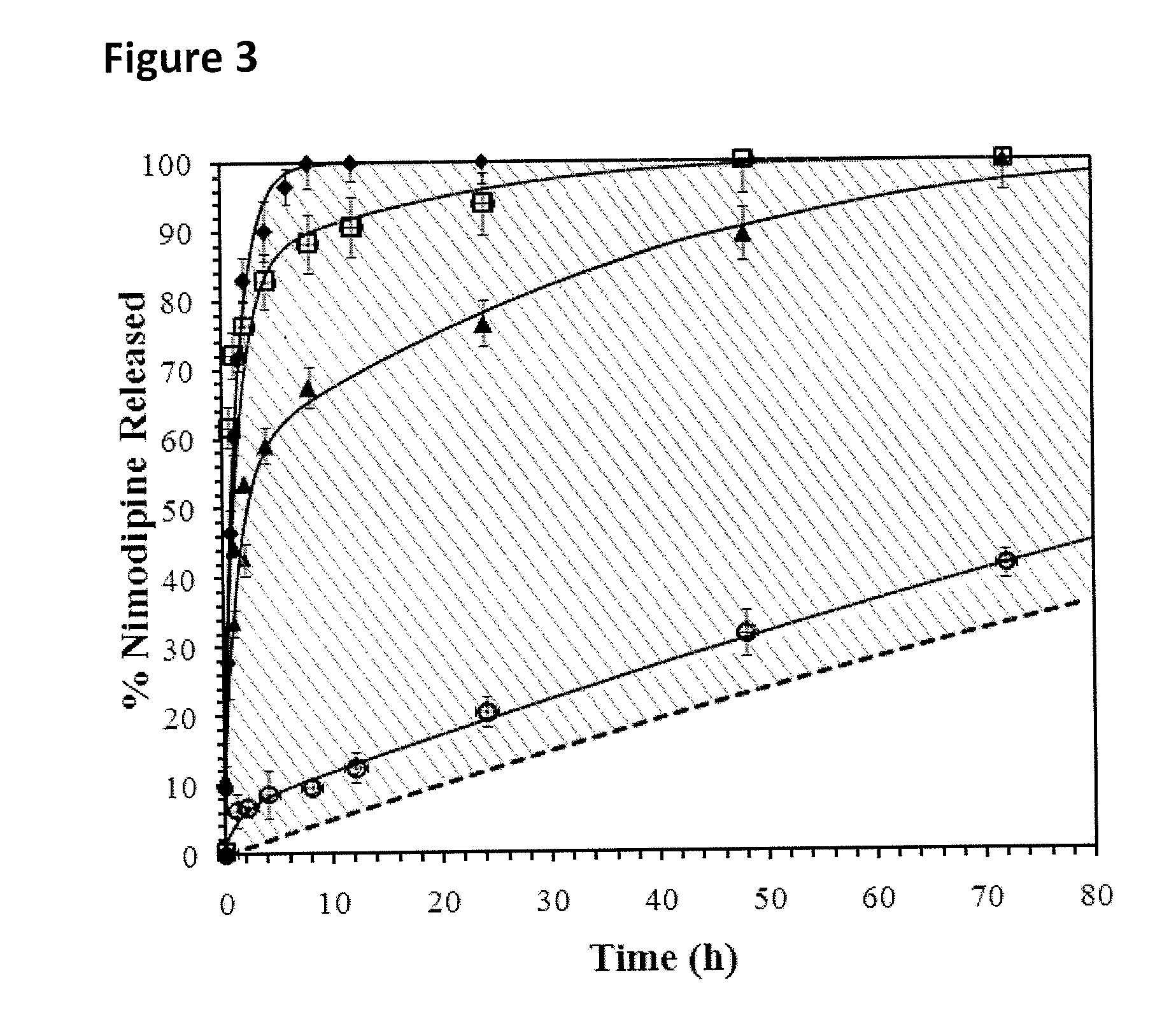Tunable sustained release of a sparingly soluble hydrophobic therapeutic agent from a hydrogel matrix
a therapeutic agent and hydrogel technology, applied in the direction of antibacterial agents, extracellular fluid disorders, metabolic disorders, etc., can solve the problem that the delivery of hydrophobic molecules is difficult to achieve in water-based systems, and achieve the effect of increasing the amount of hydrophobic molecules released and lowering the gelation temperature of m
- Summary
- Abstract
- Description
- Claims
- Application Information
AI Technical Summary
Benefits of technology
Problems solved by technology
Method used
Image
Examples
examples
[0048]To prepare nimodipine (Sigma Aldrich, Oakville, ON, Canada) for the release study, two types of nimodipine formulations were prepared at room temperature: (1) 0.5 mg / ml of nimodipine particles dissolved in 20 v / v % ethanol in water; and (2) 0.5 mg / ml of nimodipine particles dispersed in a 0.1 wt % methylcellulose (MC, Sigma Aldrich) solution in artificial CSF (aCSF). To vary the drug particle size, the particulate dispersions were either used as received (non-sonicated particles); or sonicated to reduce particle size for 1 or 5 min at 20 kHz, 40% amplitude, using a Sonics Vibra Cell CV18™ tip sonicator (Sonics & Materials Inc., Newtown, Conn., USA). The nimodipine particles dispersed in MC were sized via dynamic light scattering (DLS, Malvern Zetasizer Nano ZS™, Worcestershire, UK) for the sonicated sub-micron particles, and laser diffraction (Malvern Mastersizer 2000™, Worcestershire, UK) for the non-sonicated particles. The particle dispersions were left for 3 days at room t...
PUM
| Property | Measurement | Unit |
|---|---|---|
| particle sizes | aaaaa | aaaaa |
| particle sizes | aaaaa | aaaaa |
| diameter | aaaaa | aaaaa |
Abstract
Description
Claims
Application Information
 Login to View More
Login to View More - R&D
- Intellectual Property
- Life Sciences
- Materials
- Tech Scout
- Unparalleled Data Quality
- Higher Quality Content
- 60% Fewer Hallucinations
Browse by: Latest US Patents, China's latest patents, Technical Efficacy Thesaurus, Application Domain, Technology Topic, Popular Technical Reports.
© 2025 PatSnap. All rights reserved.Legal|Privacy policy|Modern Slavery Act Transparency Statement|Sitemap|About US| Contact US: help@patsnap.com



